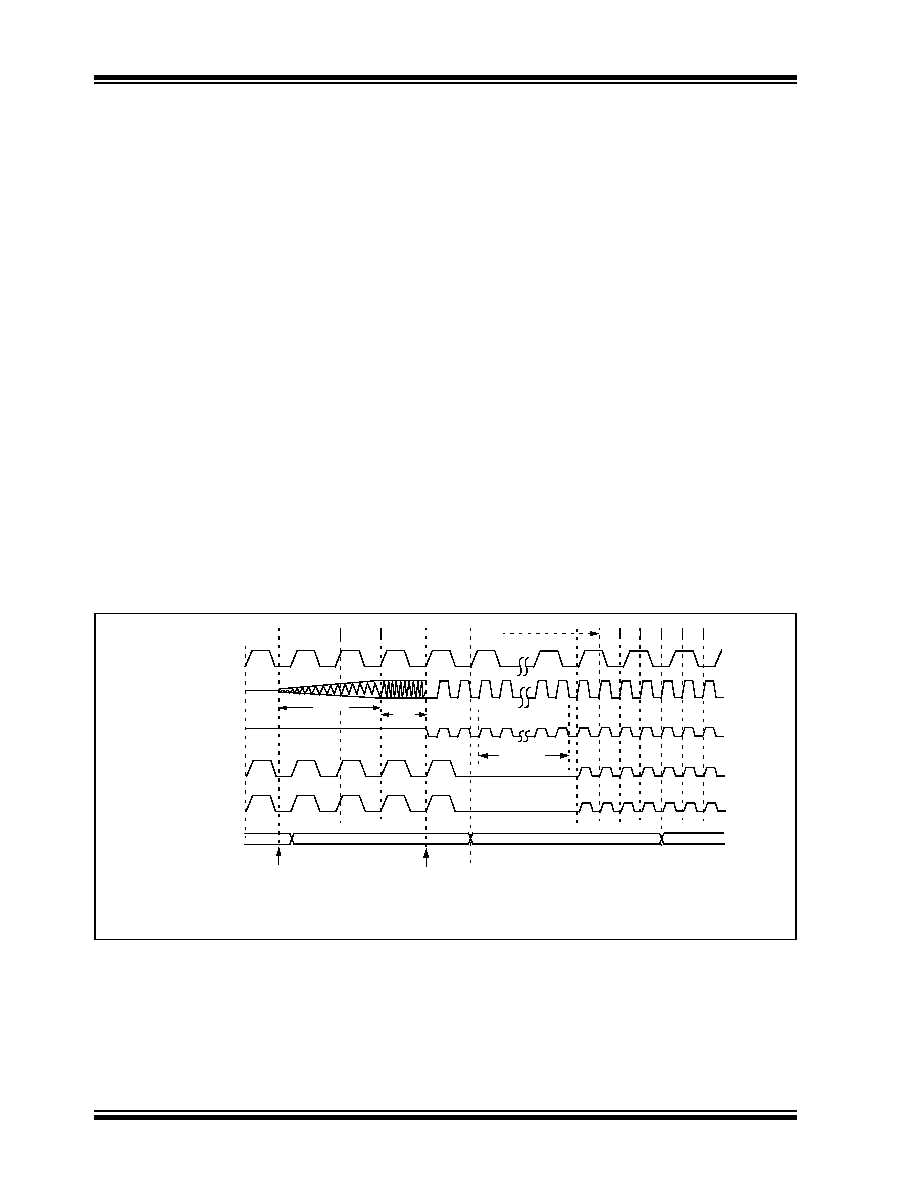- 您現(xiàn)在的位置:買賣IC網(wǎng) > PDF目錄16957 > AC162078 (Microchip Technology)HEADER INTRFC MPLAB ICD2 18F1330 PDF資料下載
參數(shù)資料
| 型號(hào): | AC162078 |
| 廠商: | Microchip Technology |
| 文件頁數(shù): | 118/318頁 |
| 文件大?。?/td> | 0K |
| 描述: | HEADER INTRFC MPLAB ICD2 18F1330 |
| 標(biāo)準(zhǔn)包裝: | 1 |
| 附件類型: | 轉(zhuǎn)換接頭 |
| 適用于相關(guān)產(chǎn)品: | ICD2 |
| 產(chǎn)品目錄頁面: | 658 (CN2011-ZH PDF) |
第1頁第2頁第3頁第4頁第5頁第6頁第7頁第8頁第9頁第10頁第11頁第12頁第13頁第14頁第15頁第16頁第17頁第18頁第19頁第20頁第21頁第22頁第23頁第24頁第25頁第26頁第27頁第28頁第29頁第30頁第31頁第32頁第33頁第34頁第35頁第36頁第37頁第38頁第39頁第40頁第41頁第42頁第43頁第44頁第45頁第46頁第47頁第48頁第49頁第50頁第51頁第52頁第53頁第54頁第55頁第56頁第57頁第58頁第59頁第60頁第61頁第62頁第63頁第64頁第65頁第66頁第67頁第68頁第69頁第70頁第71頁第72頁第73頁第74頁第75頁第76頁第77頁第78頁第79頁第80頁第81頁第82頁第83頁第84頁第85頁第86頁第87頁第88頁第89頁第90頁第91頁第92頁第93頁第94頁第95頁第96頁第97頁第98頁第99頁第100頁第101頁第102頁第103頁第104頁第105頁第106頁第107頁第108頁第109頁第110頁第111頁第112頁第113頁第114頁第115頁第116頁第117頁當(dāng)前第118頁第119頁第120頁第121頁第122頁第123頁第124頁第125頁第126頁第127頁第128頁第129頁第130頁第131頁第132頁第133頁第134頁第135頁第136頁第137頁第138頁第139頁第140頁第141頁第142頁第143頁第144頁第145頁第146頁第147頁第148頁第149頁第150頁第151頁第152頁第153頁第154頁第155頁第156頁第157頁第158頁第159頁第160頁第161頁第162頁第163頁第164頁第165頁第166頁第167頁第168頁第169頁第170頁第171頁第172頁第173頁第174頁第175頁第176頁第177頁第178頁第179頁第180頁第181頁第182頁第183頁第184頁第185頁第186頁第187頁第188頁第189頁第190頁第191頁第192頁第193頁第194頁第195頁第196頁第197頁第198頁第199頁第200頁第201頁第202頁第203頁第204頁第205頁第206頁第207頁第208頁第209頁第210頁第211頁第212頁第213頁第214頁第215頁第216頁第217頁第218頁第219頁第220頁第221頁第222頁第223頁第224頁第225頁第226頁第227頁第228頁第229頁第230頁第231頁第232頁第233頁第234頁第235頁第236頁第237頁第238頁第239頁第240頁第241頁第242頁第243頁第244頁第245頁第246頁第247頁第248頁第249頁第250頁第251頁第252頁第253頁第254頁第255頁第256頁第257頁第258頁第259頁第260頁第261頁第262頁第263頁第264頁第265頁第266頁第267頁第268頁第269頁第270頁第271頁第272頁第273頁第274頁第275頁第276頁第277頁第278頁第279頁第280頁第281頁第282頁第283頁第284頁第285頁第286頁第287頁第288頁第289頁第290頁第291頁第292頁第293頁第294頁第295頁第296頁第297頁第298頁第299頁第300頁第301頁第302頁第303頁第304頁第305頁第306頁第307頁第308頁第309頁第310頁第311頁第312頁第313頁第314頁第315頁第316頁第317頁第318頁

PIC18F1230/1330
DS39758D-page 204
2009 Microchip Technology Inc.
20.3
Two-Speed Start-up
The Two-Speed Start-up feature helps to minimize the
latency period from oscillator start-up to code execution
by allowing the microcontroller to use the INTOSC
oscillator as a clock source until the primary clock
source is available. It is enabled by setting the IESO
Configuration bit.
Two-Speed Start-up should be enabled only if the
primary oscillator mode is LP, XT, HS or HSPLL
(crystal-based modes). Other sources do not require
an OST start-up delay; for these, Two-Speed Start-up
should be disabled.
When enabled, Resets and wake-ups from Sleep mode
cause the device to configure itself to run from the
internal oscillator block as the clock source, following
the time-out of the Power-up Timer, after a Power-on
Reset is enabled. This allows almost immediate code
execution while the primary oscillator starts and the
OST is running. Once the OST times out, the device
automatically switches to PRI_RUN mode.
To use a higher clock speed on wake-up, the INTOSC
or postscaler clock sources can be selected to provide
a higher clock speed by setting bits, IRCF2:IRCF0,
immediately after Reset. For wake-ups from Sleep, the
INTOSC or postscaler clock sources can be selected
by setting the IRCF2:IRCF0 bits prior to entering Sleep
mode.
In all other power-managed modes, Two-Speed Start-up
is not used. The device will be clocked by the currently
selected clock source until the primary clock source
becomes available. The setting of the IESO bit is
ignored.
20.3.1
SPECIAL CONSIDERATIONS FOR
USING TWO-SPEED START-UP
While using the INTOSC oscillator in Two-Speed
Start-up, the device still obeys the normal command
sequences for entering power-managed modes,
including multiple SLEEP instructions (refer to
). In
practice, this means that user code can change the
SCS1:SCS0 bit settings or issue SLEEP instructions
before the OST times out. This would allow an applica-
tion to briefly wake-up, perform routine “housekeeping”
tasks and return to Sleep before the device starts to
operate from the primary oscillator.
User code can also check if the primary clock source is
currently providing the device clocking by checking the
status of the OSTS bit (OSCCON<3>). If the bit is set,
the primary oscillator is providing the clock. Otherwise,
the internal oscillator block is providing the clock during
wake-up from Reset or Sleep mode.
FIGURE 20-2:
TIMING TRANSITION FOR TWO-SPEED START-UP (INTOSC TO HSPLL)
Q1
Q3 Q4
OSC1
Peripheral
Program
PC
PC + 2
INTOSC
PLL Clock
Q1
PC + 6
Q2
Output
Q3
Q4
Q1
CPU Clock
PC + 4
Clock
Counter
Q2
Q3
Note 1:
TOST = 1024 TOSC; TPLL = 2 ms (approx). These intervals are not shown to scale.
2:
Clock transition typically occurs within 2-4 TOSC.
Wake from Interrupt Event
TPLL(1)
12
n-1 n
Clock
OSTS bit Set
Transition(2)
Multiplexer
TOST(1)
相關(guān)PDF資料 |
PDF描述 |
|---|---|
| MLF1005LR33K | INDUCTOR MULTILAYER .33UH 0402 |
| RBM18DRTF | CONN EDGECARD 36POS DIP .156 SLD |
| CBC2518T220M | INDUCTOR 22UH 20% 1007 SMD |
| RCM25DRPS | CONN EDGECARD 50POS DIP .156 SLD |
| LGU2W331MELB | CAP ALUM 330UF 450V 20% SNAP |
相關(guān)代理商/技術(shù)參數(shù) |
參數(shù)描述 |
|---|---|
| AC162079 | 功能描述:插座和適配器 MPLAB ICD 2 64/80L HEADER PIC18F85J90 RoHS:否 制造商:Silicon Labs 產(chǎn)品:Adapter 用于:EM35x |
| AC162083 | 功能描述:插座和適配器 MPLAB ICD 2 8L/14L HEADER PIC16F616 RoHS:否 制造商:Silicon Labs 產(chǎn)品:Adapter 用于:EM35x |
| AC162087 | 功能描述:插座和適配器 MPLAB ICD 2 68/84 HEADER (PIC18F87J50) RoHS:否 制造商:Silicon Labs 產(chǎn)品:Adapter 用于:EM35x |
| AC162088 | 功能描述:插座和適配器 MPLAB ICD 2 PIC24FJ64GA004 28P RoHS:否 制造商:Silicon Labs 產(chǎn)品:Adapter 用于:EM35x |
| AC162088 | 制造商:Microchip Technology Inc 功能描述:MPLAB ICD 2 PIC24FJ64GA004 28P Header |
發(fā)布緊急采購,3分鐘左右您將得到回復(fù)。